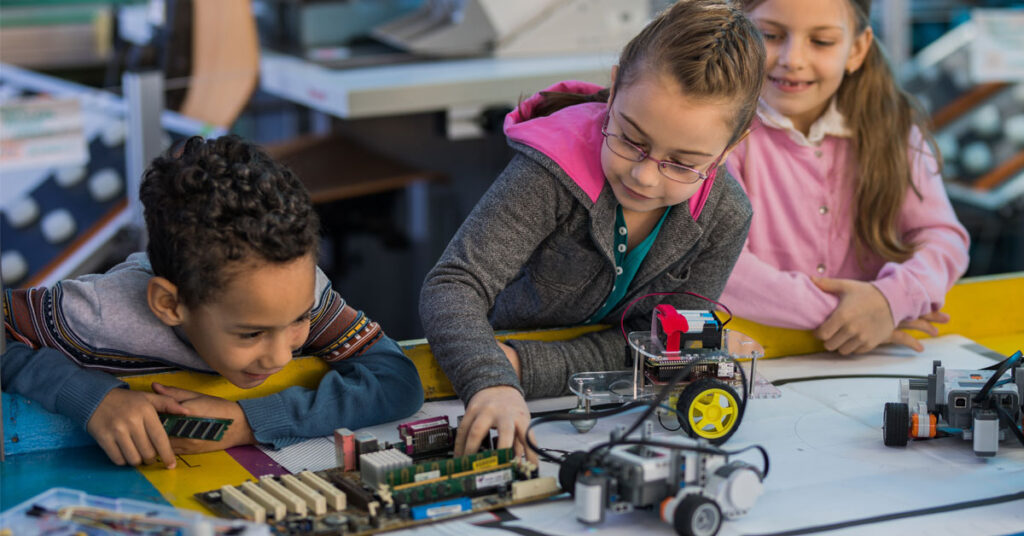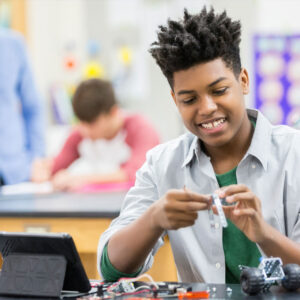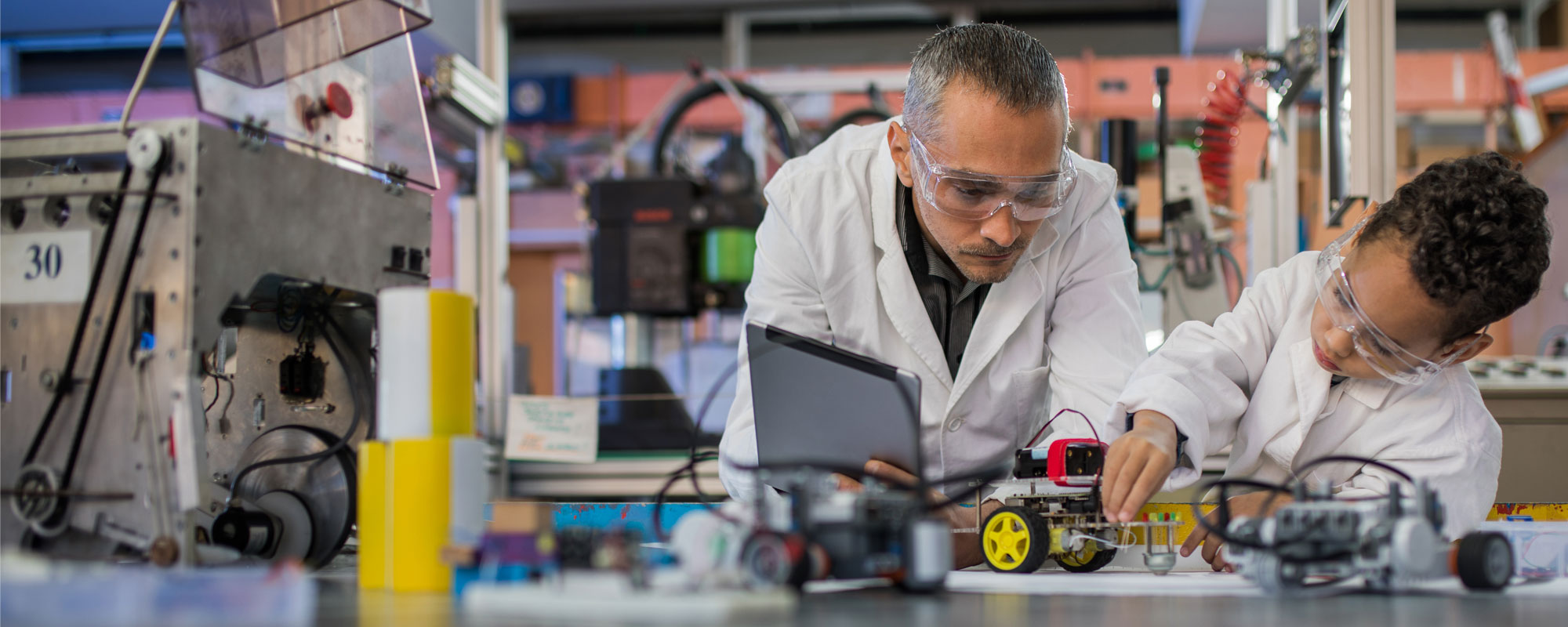Responsibility
Igniting the Spark in Future STEM Leaders
Timken engineers design and build products for a more efficient world. The company’s problem-solving approach extends into communities, where realizing an efficient world also depends on the people who build it. Today, Timken supports science, technology, engineering and math (STEM) education through collaborations with organizations like NASA and the Lebron James Family Foundation’s I PROMISE school.
Among today’s youth are future experts who will advance technology in exceptional ways—improving life on Earth and beyond. All they need is for someone to ignite their passion for STEM. Darlene Walker, head of the office of STEM engagement at NASA’s Glenn Research Center, explains how equitable access to STEM learning experiences creates a more diverse workforce ready to tackle the scientific challenges of our time.
Q: Why is NASA prioritizing STEM education among K-12 and college students?
Walker: Our vision is to provide students opportunities to engage in the excitement of NASA research, exploration and discovery. If we are going to fulfill NASA’s mission to have a long-term human presence on the moon—and eventually send astronauts to Mars—we need all the talent and skills available to us. NASA’s STEM education investments will attract and equip the next generation of researchers and explorers who will achieve our aeronautics and space exploration goals for many years to come.
Q: One of your goals is to increase diversity, equity and inclusion in STEM-related careers. How will greater diversity enhance future innovation?
Walker: The National Academies of Science, Engineering and Medicine reports an opportunity gap, especially for students living in poverty, Black, Latino and Indigenous students. K-12 students living in rural areas have also lacked access to high-quality science education.
High-quality STEM education is critical for developing the future aerospace industry workforce, but it’s also essential to everyone. Innovation helps us navigate our technology-rich society, solve complex local and global challenges and drive economic opportunities. Equitable access to quality STEM learning experiences is essential to ensure all students develop the skills and knowledge necessary to thrive and achieve professional success.
Q: NASA STEM Engagement opportunities range from online activities for primary school children to college internships that engage students in real-world missions like the Webb Telescope. What are some of your favorite accomplishments across the program?
Walker: Last year alone, 195 undergraduate and graduate students participated in internships at NASA Glenn. In addition, more than 76,000 global students from 786 schools accessed real-time science with EarthKam, a program that enables students to photograph and examine Earth from a space crew’s perspective. Using the internet, students control a special digital camera mounted onboard the International Space Station. Photos are posted for the public and participating classrooms around the world to view.
Finally, five Ohio-based high schools participated in our NASA High School Capstone program, which permits students to pursue research related to acoustic damping, hydrology, power management and distribution, remote sensing of harmful algal blooms, and simulated lunar operations. The capstones attract diverse groups of students to STEM and spark their interest in NASA’s mission and work.
Q: What is NASA working on currently that can inspire students to pursue STEM careers?
Walker: NASA’s Glenn Research Center is working toward our goal of landing the first woman and person of color on the lunar surface through the Artemis program. We will use what we learn on and around the Moon to take the next giant leap – sending astronauts to Mars.

Educating Educators: Timken Grants Help Students Experience the Wonders of Space Exploration
Annually, Timken provides several grants for K-12 educators to participate in programming offered through the Office of STEM Engagement at NASA’s Glenn Research Center. One recipient is the Greater Cleveland Neighborhood Centers Association (NCA). The program helps NCA integrate NASA-developed curriculums into its after-school programs.
Reynaldo Boff-Clinger, NCA’s STEAM education manager, is part of the dedicated staff administering the curriculum to students. “The activities give them an opportunity to nurture interests beyond what’s available to them in the classroom,” he says. “The grant money is used for supplies like electronics and software—resources that would otherwise be unavailable to complete the program.”
Boff-Clinger teaches these budding engineers how to design and build circuit boards like those used on the International Space Station. He tests their problem-solving skills by giving them scenarios like an asteroid hitting the station’s solar array, which generates power for the station. Students must prioritize what applications the circuit board needs to keep operational, and what can be cut, to conserve energy yet keep the astronauts safe.
“The kids really enjoy digging in and building things with their own two hands,” Boff-Clinger notes. “I’m looking forward to using the next grant to inspire STEAM in a new group that’s more inclusive of elementary school-age students — they’ll be building and programming robots this fall.”
Like NASA, Timken offers students a glimpse into what it’s like to pursue a STEM career through its own Engineer for a Day program. Read about it here.
Published: 2022/10/31
